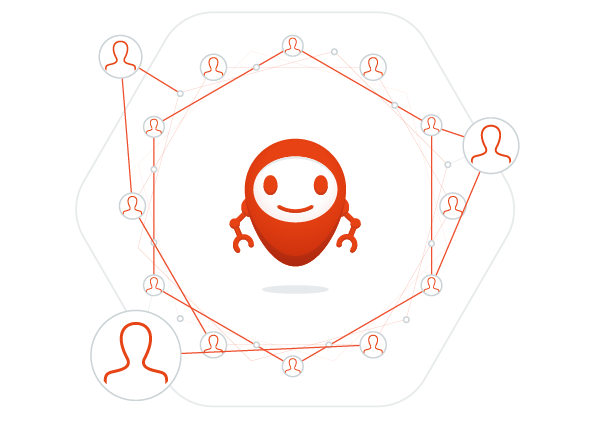The digitalization of the world generates more than 100 billion electronic objects per year, or almost 10 electronic objects per person every year. In this gigantic global market that is reshaping most industries, MicroEJ has established itself internationally as the alternative to Android Things for all everyday electronic objects (except smartphones), whether connected or not. Let’s talk with the CEO Fred Rivard, to learn more about the “software containers” market and MicroEJ, which allows the largest community of engineers in the world to create intelligent electronic objects in a fast and cost-effective way.
You can also watch the interview in:
🇫🇷 French – 🇩🇪 German – 🇪🇸 Spanish – 🇧🇷 Portuguese
We are experiencing a strong acceleration in the development of intelligent objects, which incorporate increasingly varied requirements defined by customer needs. This includes the requirement for lower product costs with equivalent functionality, across industry sectors such as smart home, energy & utilities, wearables, home appliances, industrial devices, etc.
The challenge MicroEJ is solving is to democratize the programming of these objects to as many engineers as possible all over the world, and not to depend only on a small community of experts. Our solution, MICROEJ VEE is an application container, allowing all electronic devices to be programmed as easily and quickly as Smartphone applications. And all this while being reliable, safe, low power consumption, despite the extreme heterogeneity of hardware components in constant evolution. With a community of 35 million developers, more than 50% of all computer scientists in the world are already trained to use MicroEJ.
In the 2000s, the use of software application containers became widespread on servers, PCs and smartphones. This has enabled an explosion of both hardware and software innovations, by decoupling the industrial cycles of these two major sectors, which often have different business models. This trend has been growing exponentially over the last 5 years in all electronic sectors, and started more than 10 years ago with ad-hoc, proprietary solutions, developed internally by large groups. In recent years, the trend has been to use standard market solutions, of which MicroEJ is one. The trend is clearly towards “Buy” strategies, which are less expensive than “Make” strategies, allowing manufacturers to concentrate on their core business and their added value, while leveraging software container provided by specialized players.
As an illustration, MicroEJ is seeing our sales double (on average), every 18 months, with already more than 100 million MICROEJ VEE containers sold across a wide variety of devices, Powered by MicroEJ®.
This ability to decouple hardware and software cycles for all major chips on the market, allows manufacturers to be “dual suppliers” in order to limit their risk of supply disruption in their production chain, and to guarantee their turnover. We address this topic in a White Paper available on our website
Building an electronic device is an arduous activity with many different disciplines that need to be “organized”, just like when constructing a building. Having standardized interfaces between the various business components allows the reuse of existing software and hardware bricks: this is the key to quickly assemble, like a Lego set, the various elements into a device whose production will then be profitable.
So, the use of software containers brings two tangible financial gains:
A final, more qualitative gain lies in the increase in security. Indeed, containers create spaces that isolate the functions that are “under the container” from the business functions that are protected in the container. Overall reliability is also increased: we speak of security by construction.
All the players in the value-added chain are net beneficiaries of the productivity gains brought about by MICROEJ VEE (Virtual Execution Environment) containers. This includes both the end customers, who have better, more reliable, more secure products at lower cost, and the manufacturers of these devices, who produce them more quickly and at lower cost.
Impacting all industrial markets (Consumer Electronics, Home Automation, Avionics, Energy, Smart-Home, Medical, Telecom, Home Appliances, Automation, etc.), software is found in all electronic objects in the entire industrial economy. These software containers, embedded in the heart of devices, leverage software ecosystems and organize critical economic masses, products and jobs, by being the main interface between the electronic chip and the application software that carries a large part of the value and function offered to users.
Finally, when we meet less mature customers, we assist them with change management actions, so that they can also benefit from efficient processes and implement their ideas through their devices.
Like all manufacturers in the digital sector, we are in great demand during this post-covid economic recovery phase, a crisis that has accelerated the transformation towards all-digital technology. MICROEJ VEE has been identified as a major element for manufacturers who wish to meet exponential demand in rapidly evolving markets. To support this demand, we have begun a cycle of strategic partnerships with leading chip suppliers, particularly around 4G/5G. We are also continuing to build on our fundamentals, such as optimizing power consumption for all battery-powered products (for example: wearables). Overall, we expect MICROEJ VEE to make the same progress as Android in smartphones. And in keeping with our commitment to democratize the programming of electronic objects among the global community of computer scientists, we recently announced support for JavaScript®, the first language used in the world with Java.
Discover MicroEJ world: We invite all developers around the world to test our support by visiting our dedicated site for the developer community. We are waiting for you!

Want to know more about MicroEJ powerful technology for low-cost, low-power smart devices? Give us a shout by filling out our contact form